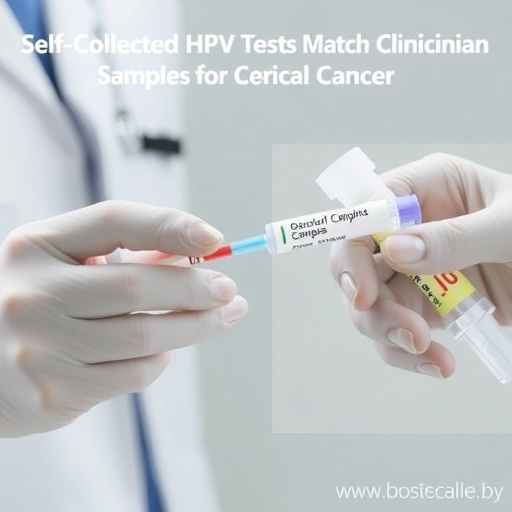Current tools used to predict prostate cancer progression are generally subjective in nature, leading to differing interpretations among clinicians
New York, NY (February 7, 2019) — A team of researchers from the Icahn School of Medicine at Mount Sinai and Keck School of Medicine at the University of Southern California (USC) have developed a novel machine-learning framework that distinguishes between low- and high-risk prostate cancer with more precision than ever before. The framework, described in a Scientific Reports paper published today, is intended to help physicians–in particular, radiologists–more accurately identify treatment options for prostate cancer patients, lessening the chance of unnecessary clinical intervention.
Prostate cancer is one of the leading causes of cancer death in American men, second only to lung cancer. While recent advances in prostate cancer research have saved many lives, objective prediction tools have, until now, remained an unmet need.
Presently, the standard methods used to assess prostate cancer risk are multiparametric magnetic resonance imaging (mpMRI), which detects prostate lesions, and the Prostate Imaging Reporting and Data System, version 2 (PI-RADS v2), a five-point scoring system that classifies lesions found on the mpMRI. Together, these tools are intended to soundly predict the likelihood of clinically significant prostate cancer. However, PI-RADS v2 scoring is subjective and does not distinguish clearly between intermediate and malignant cancer levels (scores 3, 4, and 5), often leading to differing interpretations among clinicians.
Combining machine learning with radiomics–a branch of medicine that uses algorithms to extract large amounts of quantitative characteristics from medical images–has been proposed as an approach to remedy this drawback. However, other studies have only tested a limited number of machine learning methods to address this limitation. In contrast, the Mount Sinai and USC researchers developed a predictive framework that rigorously and systematically assessed many such methods to identify the best-performing one. The framework also leverages larger training and validation data sets than previous studies did. As a result, researchers were able to classify patients’ prostate cancer with high sensitivity and an even higher predictive value.
“By rigorously and systematically combining machine learning with radiomics, our goal is to provide radiologists and clinical personnel with a sound prediction tool that can eventually translate to more effective and personalized patient care,” said Gaurav Pandey, PhD, Assistant Professor of Genetics and Genomic Sciences at the Icahn School of Medicine at Mount Sinai and senior corresponding author of the publication alongside co-corresponding author Bino Varghese, PhD, Assistant Professor of Research Radiology at the Keck School of Medicine at USC. “The pathway to predicting prostate cancer progression with high accuracy is ever improving, and we believe our objective framework is a much-needed advancement.”
###
About the Mount Sinai Health System
The Mount Sinai Health System is New York City’s largest integrated delivery system, encompassing eight hospitals, a leading medical school, and a vast network of ambulatory practices throughout the greater New York region. Mount Sinai’s vision is to produce the safest care, the highest quality, the highest satisfaction, the best access and the best value of any health system in the nation. The Health System includes approximately 7,480 primary and specialty care physicians; 11 joint-venture ambulatory surgery centers; more than 410 ambulatory practices throughout the five boroughs of New York City, Westchester, Long Island, and Florida; and 31 affiliated community health centers. The Icahn School of Medicine is one of three medical schools that have earned distinction by multiple indicators: ranked in the top 20 by U.S. News & World Report’s “Best Medical Schools”, aligned with a U.S. News & World Report’s “Honor Roll” Hospital, No. 12 in the nation for National Institutes of Health funding, and among the top 10 most innovative research institutions as ranked by the journal Nature in its Nature Innovation Index. This reflects a special level of excellence in education, clinical practice, and research. The Mount Sinai Hospital is ranked No. 18 on U.S. News & World Report’s “Honor Roll” of top U.S. hospitals; it is one of the nation’s top 20 hospitals in Cardiology/Heart Surgery, Gastroenterology/GI Surgery, Geriatrics, Nephrology, and Neurology/Neurosurgery, and in the top 50 in six other specialties in the 2018-2019 “Best Hospitals” issue. Mount Sinai’s Kravis Children’s Hospital also is ranked nationally in five out of ten pediatric specialties by U.S. News & World Report. The New York Eye and Ear Infirmary of Mount Sinai is ranked 11th nationally for Ophthalmology and 44th for Ear, Nose, and Throat. Mount Sinai Beth Israel, Mount Sinai St. Luke’s, Mount Sinai West, and South Nassau Communities Hospital are ranked regionally.
For more information, visit http://www.
Media Contact
Domonique Chaplin
[email protected]
347-963-8838
http://dx.




